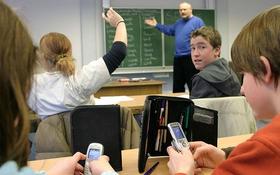Dolan Ctr Maryville Farm Campus ranks in the top 30% of all schools in Illinois for overall test scores (math proficiency is top 50%, and reading proficiency is top 20%).
The percentage of students achieving proficiency in math is ≤20% (which is lower than the Illinois state average of 28%). The percentage of students achieving proficiency in reading/language arts is <50% (which is higher than the Illinois state average of 32%).
Quick Facts (2026)
- School Type: Alternative school
- Grades: Kindergarten-12
- Math Proficiency: ≤20%
- Reading Proficiency: <50%
- Source: National Center for Education Statistics (NCES), IL Dept. of Education
School Overview
The teacher population of 12 teachers has grown by 20% over five school years.
School Type
Grades Offered
Grades Kindergarten-12
Total Students (19-20)
31 students
Total Classroom Teachers
12 teachers
School Calendar
School Rankings
Math Test Scores (% Proficient)
(20-21)≤20%
28%
Reading/Language Arts Test Scores (% Proficient)
(20-21)<50%
32%
Student-Teacher Ratio
n/a
13:1
American Indian
(19-20)n/a
n/a
Asian
(19-20)n/a
5%
Hispanic
(19-20)3%
26%
Black
(19-20)3%
17%
White
(19-20)81%
48%
Hawaiian
(19-20)n/a
n/a
Two or more races
(19-20)13%
4%
Eligible for Free Lunch (19-20)
71%
47%
Eligible for Reduced Lunch (14-15)
10%
2%
School Statewide Testing
School District Name
Source: National Center for Education Statistics (NCES), IL Dept. of Education
Profile last updated: 02/09/2025
Frequently Asked Questions
What percent of students have achieved state testing proficiency in math and reading?
≤20% of students have achieved math proficiency (compared to the 28% IL state average), while <50% of students have achieved reading proficiency (compared to the 32% IL state average).
How many students attend Dolan Ctr Maryville Farm Campus?
31 students attend Dolan Ctr Maryville Farm Campus.
What is the racial composition of the student body?
81% of Dolan Ctr Maryville Farm Campus students are White, 13% of students are Two or more races, 3% of students are Hispanic, and 3% of students are Black.
What grades does Dolan Ctr Maryville Farm Campus offer ?
Dolan Ctr Maryville Farm Campus offers enrollment in grades Kindergarten-12
What school district is Dolan Ctr Maryville Farm Campus part of?
Dolan Ctr Maryville Farm Campus is part of Durand Community Unit School District 322.
School Reviews
Review Dolan Ctr Maryville Farm Campus. Reviews should be a few sentences in length. Please include any comments on:
- Quality of academic programs, teachers, and facilities
- Availability of music, art, sports and other extracurricular activities
Recent Articles

Public School Transportation & Commute Planning Guide
Learn how public school transportation and commute planning can help families prepare for the coming school year safely and efficiently.

New Public School Safety Protocols 2025–26 Guide
Learn how new public school safety protocols for 2025–26 affect students, parents, and schools nationwide.

How Technology Transforms Education in 2025
Explore how technology shapes learning today, with updated data, policy context, trends, and real-world implications for students, educators, and families.





